A prayer against the plague and other offices for Female Franciscan Use, Bruges, c.1550 decorated manuscript
£0.00
Out of stock
Portable Processional, with the Office of the Dead, a prayer against the plague and other offices, for Female Franciscan use, decorated manuscript in Latin with some rubrics and prayers in Flemish, on paper [Flanders (most probably Bruges), c. 1550].
215 x 160mm., 162 leaves (with leaves used as pairs within the quires and pasted to their immediate neighbour to form a double sheet of paper, presumably to avoid shine-through of ink, thus producing 4 double thickness text leaves from standard gatherings of 8 leaves; many of these pasted together leaves now separated through glue degrading with age and thus showing their blank inner pages), contemporary foliation 1-80 in red ink in upper outer corner of text frame, wanting original leaves 9 and 10, else complete, collation: ii+ i8 (foliated 1-4), ii6 (foliated 5-7), iii4 (foliated 8 and then unfoliated leaf, and wanting original leaves 9 and 10), iv8 (foliated 11-14), v8 (foliated 15-18), vi8 (foliated 19-22), vii8 (foliated 23-26), viii8 (foliated 27-30), ix8 (foliated 31-34), x4 (foliated 35-36, but with continuous text), xi8 (foliated 37-40), xi8 (foliated 41-44), xii8 (foliated 45-48), xiii8 (foliated 49-52), xiv4 (foliated 53-54, but with continuous text), xv8 (foliated 55-58), xvi8 (foliated 59-62), xvii8 (foliated 63-66), xviii 8 (foliated 67, two unfoliated leaves perhaps added as an afterthought, then 68), xix8 (foliated 69-72), xx8 (foliated 73-76), xxi4 (foliated 77-80) +ii, text usually in 6 lines with music on accompanying 4-line red stave (rastrum: 12 mm.), music in square notation, initials in simple red or pale green, the larger with blank spaces left in their bodies picking out patterns, watermark of an eagle within a shield of a type common to much of sixteenth-century Germany and its neighbours with a single example recorded in Antwerp in 1588 (see Briquet nos. 213-27, as well as no. 895, recorded in Tübingen in 1557), two vellum reference tabs present at edge of book block to aid user to easily find the Pater Noster, Den 30 Dach (in Flemish) and Quaesumus domine prayers (notes on these tabs suggesting their addition at time of current binding), small corrections and additions made on small paper slips pasted over the original text, occasional tears to edges of a few leaves, a few leaves loose in volume, some small spots and stains, else in good condition; in early seventeenth-century binding (dated by watermark of endleaves) of brown leather tooled with chevrons within triple filet over thin wooden boards, small strips from a fifteenth-century liturgical manuscript on vellum reused to strengthen boards attachment to bookblock, two original and working brass clasps on foredge, gatherings becoming loose in binding, some endleaves loose in volume, creases and splits to spine, with a few cracks
Provenance:
1.Written and decorated for use in a female Franciscan community in Flanders c. 1550, and almost certainly produced by the inmates for their own use. The style of the book is simple, and the musical notation that of the Middle Ages rather than that
of mid-sixteenth-century Flanders which had overwhelmingly changed to polyphonic notation by about 1540. Moreover, the text makes frequent reference to the ‘soror’ (sisters) who were to use the volume (see fols. 50r, 51r, 53rv, 74r and the verso of the unnumbered leaf following fol. 67, for examples), and prayers to St. Francis on fols. 31v-32r reveal the order of these nuns. The presence of the Processional for the Holy Blood makes this most probable that this book was intended for use in Bruges, where the Heilig-Bloedbasiliek holds a relic of Holy Blood reportedly collected by Joseph of Arimathea and brought to Bruges in the twelfth century by Thierry of Alsace, count of Flanders. The most likely Franciscan house in Bruges was that of Bethlehem, a large Poor Clare foundation of c. 1260, plundered in 1581 by Protestant rebels, but rebuilt and thriving until its suppression during the Secularisation in 1783. There are also the much smaller Colettine foundations (offshoots of the Poor Clares) of St. Marie (founded 1450s, suppressed 1783) and Annonciades (founded in 1516, date of suppression unknown) in Bruges, but there is nothing here to suggest the worship of St. Colette.
2. In addition, sheets and scraps of paper and a small vellum bookmark provide evidence of continued use of the volume through the sixteenth and seventeenth centuries. Three loose pages in the volume, have their rectos filled with late sixteenth-century script. Two of these contain the versicles to the Pater Noster and various prayers, and the third just prayers, and these perhaps functioned as oaths for incoming sisters to take (the office for this included in this volume, see below), presumably being presented with this book at the same time. A fourth scrap of paper, some 205 by 110 mm., has also been used as a bookmark in the volume, and has part Flemish-part Latin instructions for how the ‘meedesuster’ (fellow sister) should perform various religious rituals. The last signs of use are a small strip of vellum with similar instructions in Flemish in seventeenth-century hand also used as bookmark, and a strip of seventeenth-century paper with a Latin prayer tucked under the sewing thread between fols. 50v and 51r.
3. Presumably leaving that Franciscan community during the Secularisation in 1783 and entering private hands then.
4. Recently emerging in the Continental trade.
Text
Processional (fol. 1r), with musical offices for various ecclesiastical processions, with instructions for the book’s user during those services; then the Office of the Dead (fol. 35r); the Stella celi extirpavit (fol. 68r), a prayer against illness, and specifically the plague, associated with Franciscan use (see C. Macklin, ‘Plague, performance and the elusive history of the Stella celi extirpavit’, Early Music History 29, 2010, pp. 1-31), followed by other miscellaneous offices, including the profession of a new sister (fol. 74r).
Be the first to review “A prayer against the plague and other offices for Female Franciscan Use, Bruges, c.1550 decorated manuscript” Cancel reply
Product Enquiry
Related products
C12th - C13th manuscripts
St Augustine on John 17, the High Priestly Prayer on a huge bifolium C12th, Italy
C14th -C16th manuscripts
C14th -C16th manuscripts
C12th - C13th manuscripts

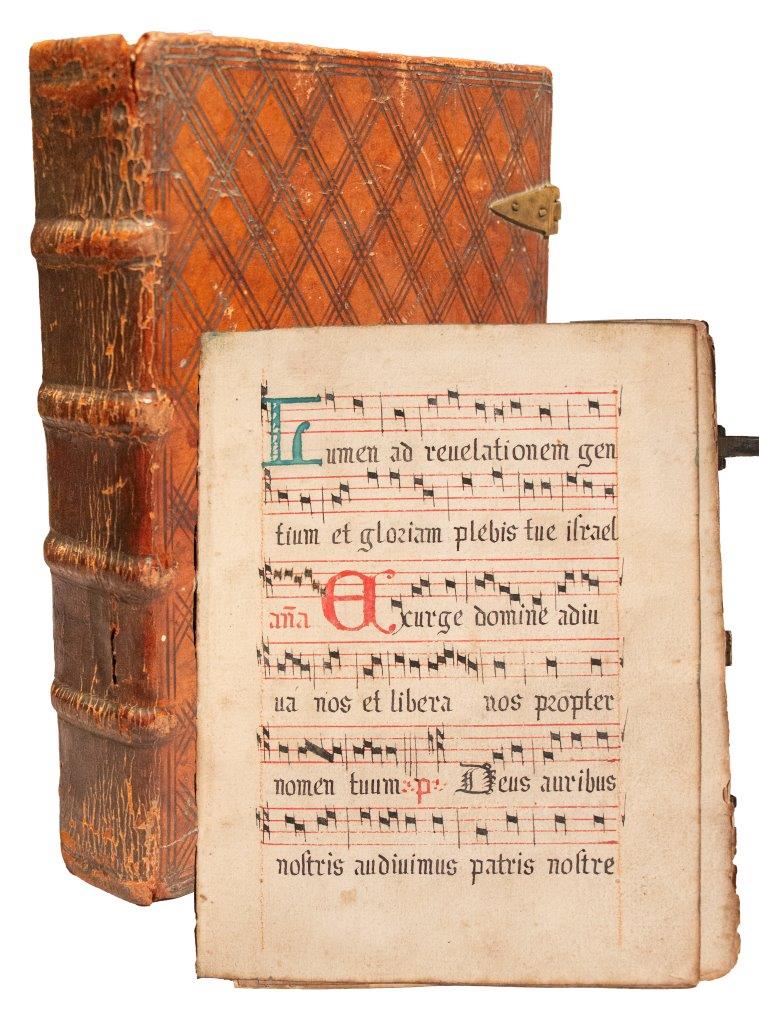



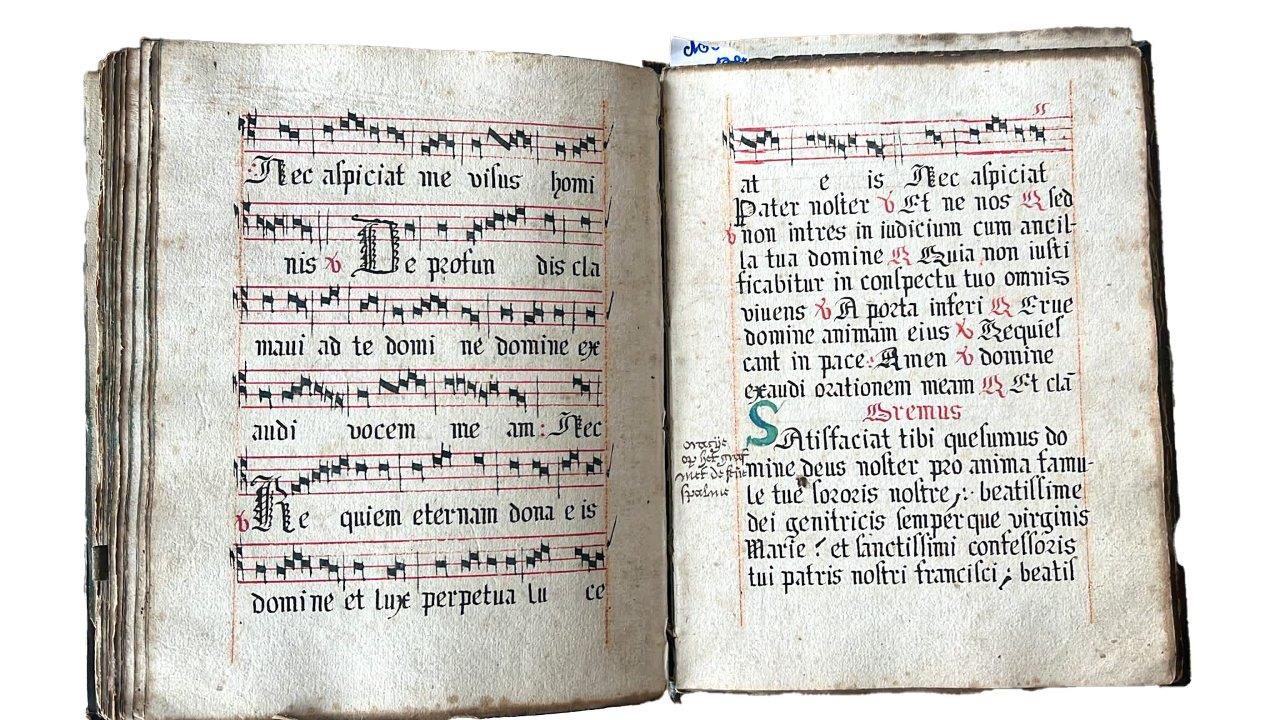


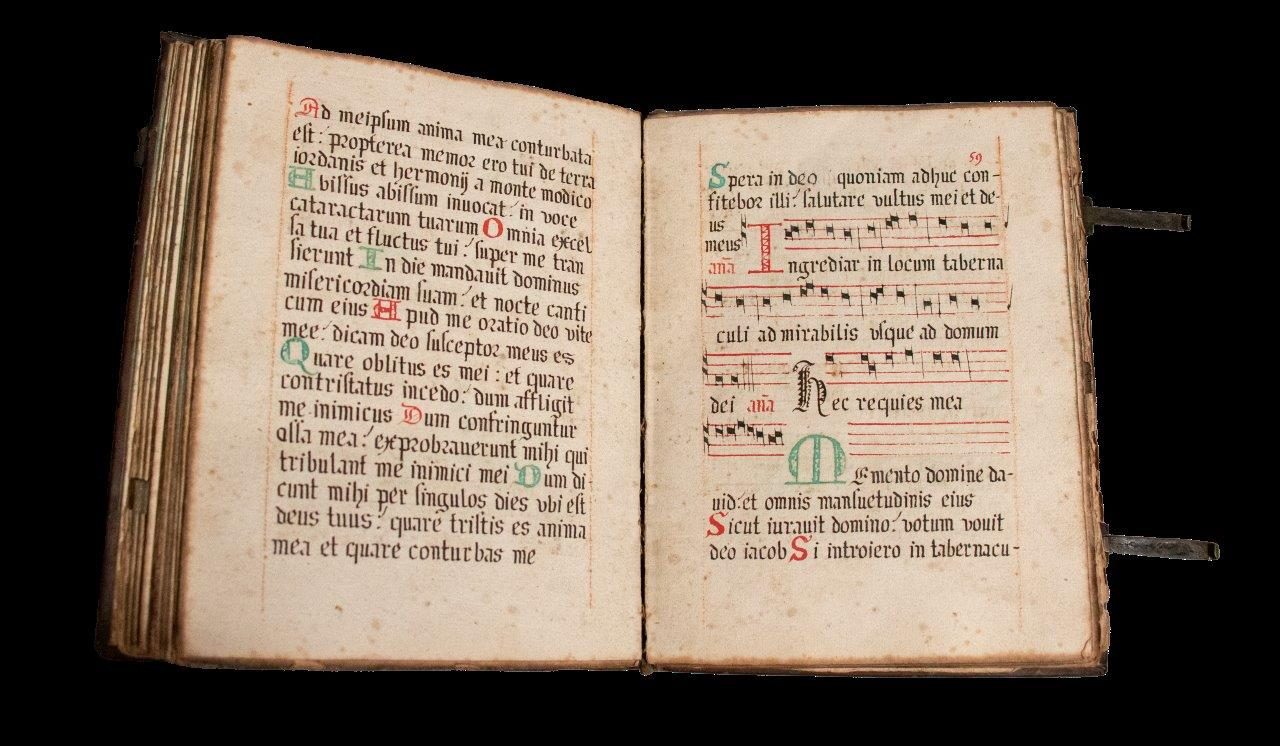

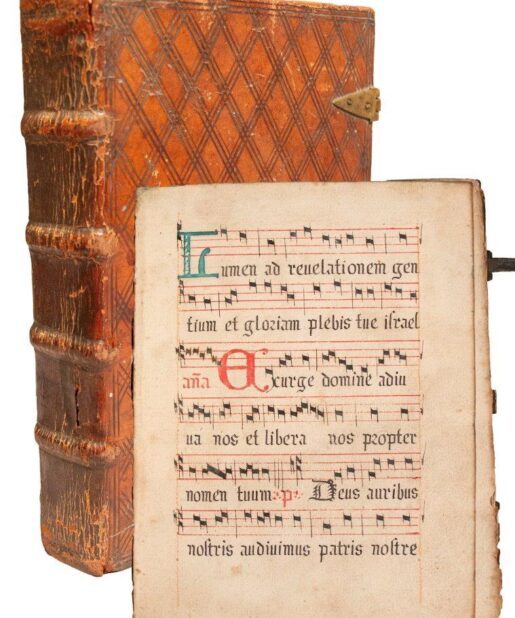
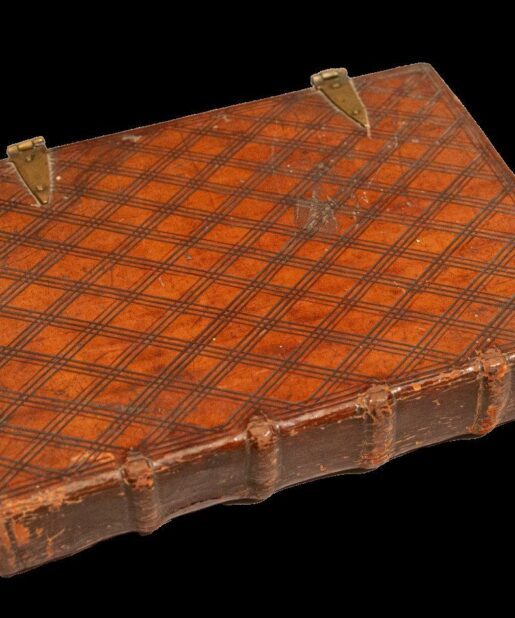
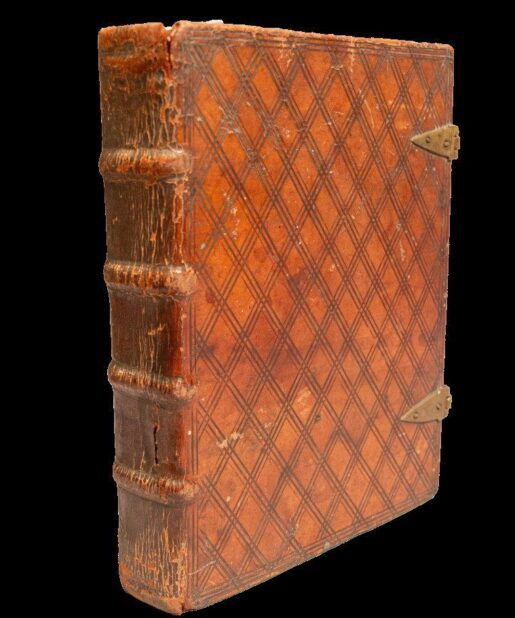
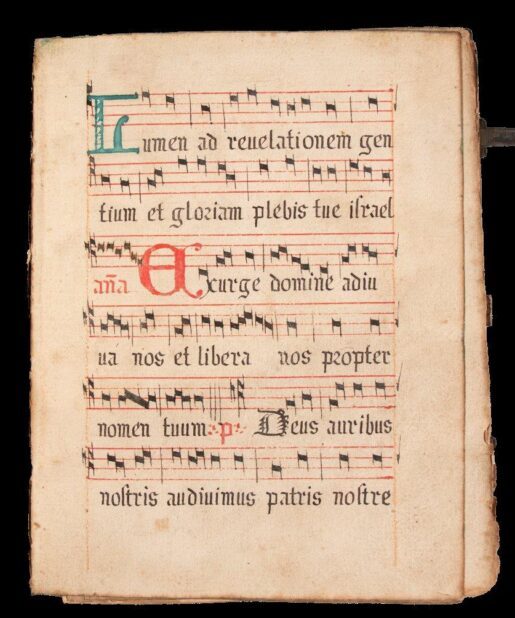
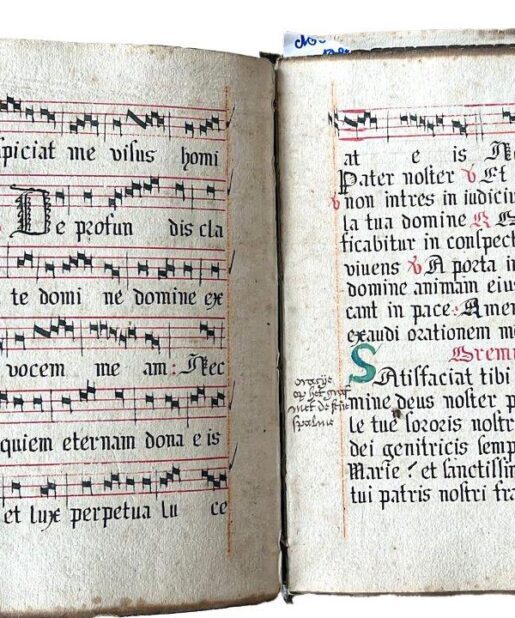
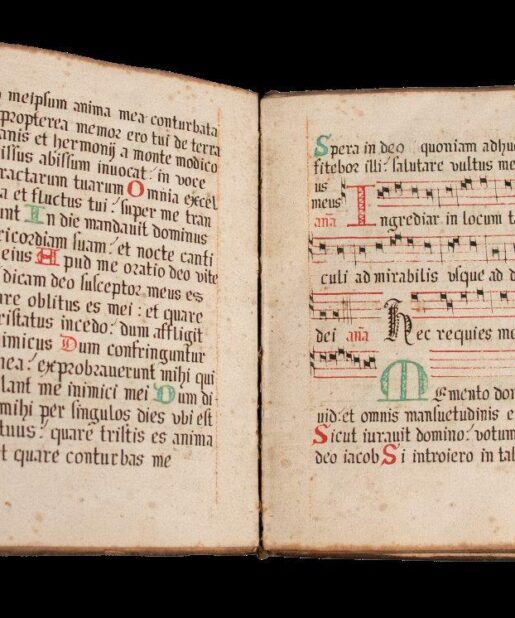
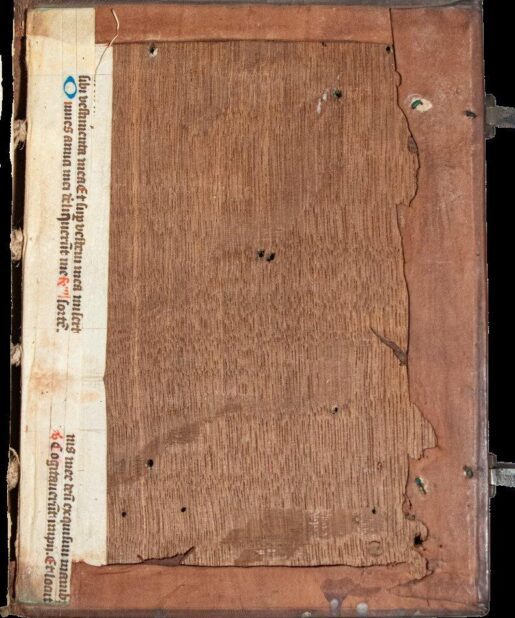
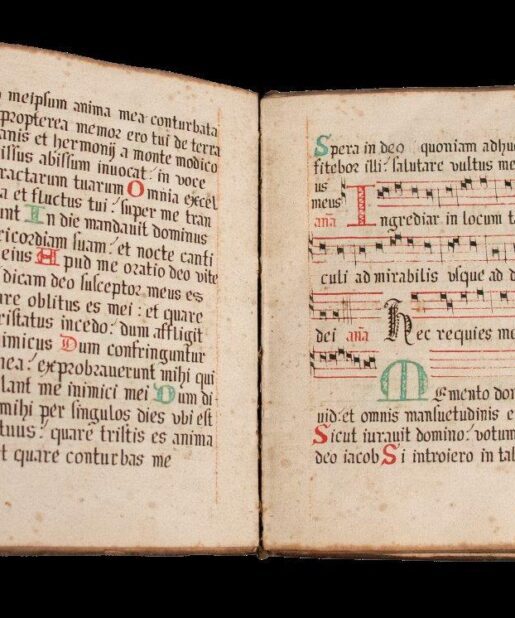
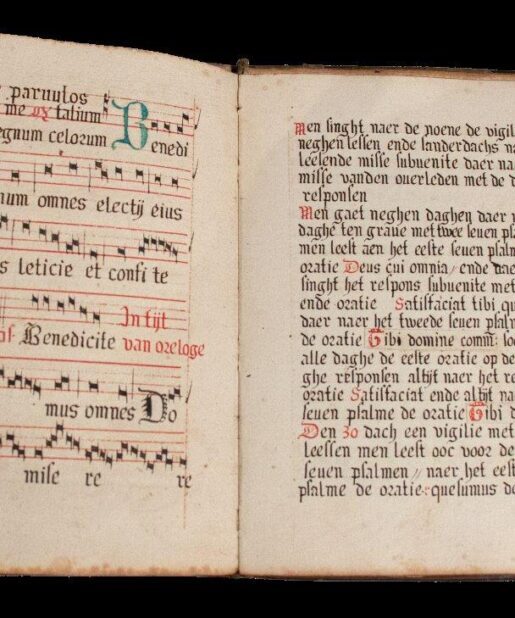
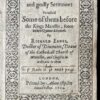
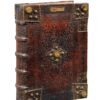
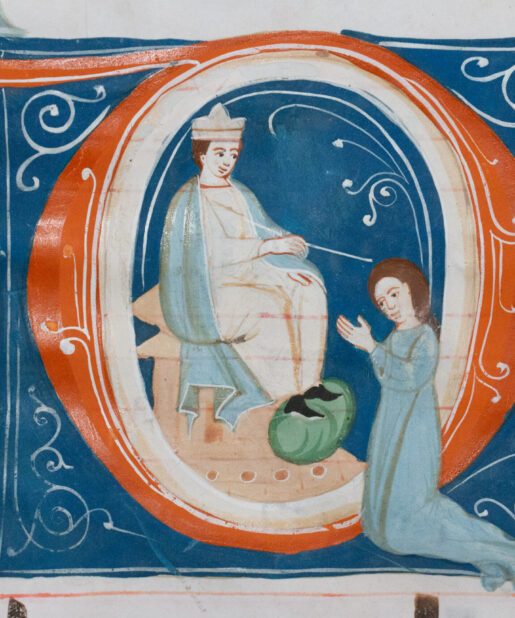
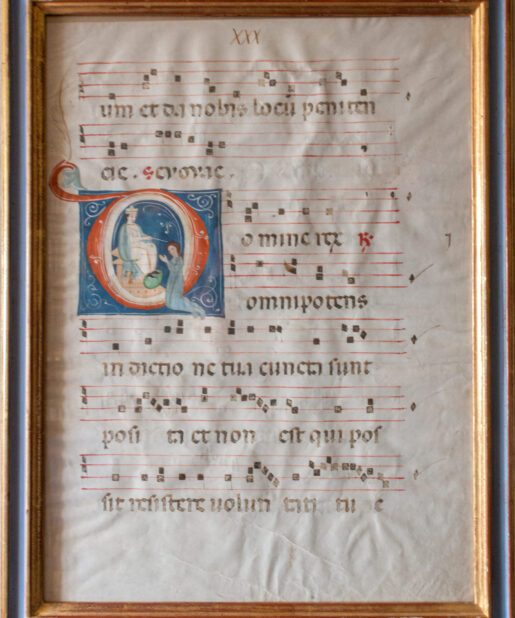
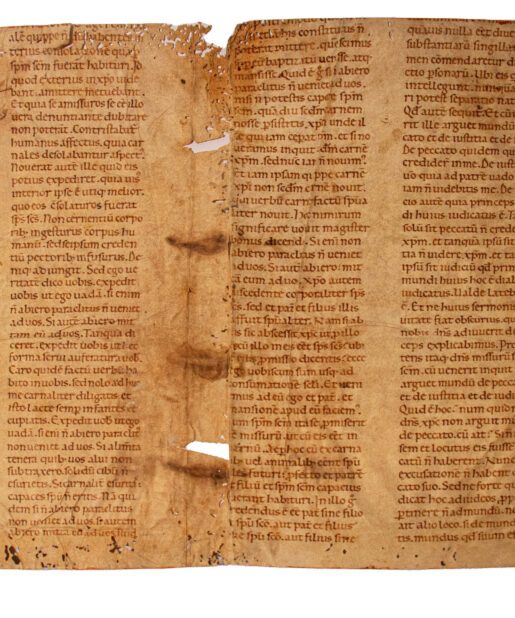
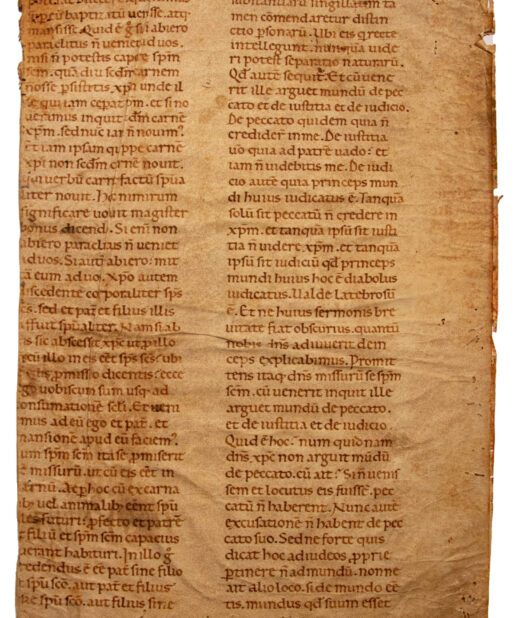
![A single leaf; Augustine’s Enarrationes in Psalmos, for Psalm 41:6-8 [manuscript] A single leaf; Augustine’s Enarrationes in Psalmos, for Psalm 41:6-8 [manuscript]](https://butlerrarebooks.co.uk/wp-content/uploads/2021/06/IMG_2115-scaled-515x618.jpg)
![A single leaf; Augustine’s Enarrationes in Psalmos, for Psalm 41:6-8 [manuscript] A single leaf; Augustine’s Enarrationes in Psalmos, for Psalm 41:6-8 [manuscript]](https://butlerrarebooks.co.uk/wp-content/uploads/2021/06/IMG_2112-scaled-515x618.jpg)
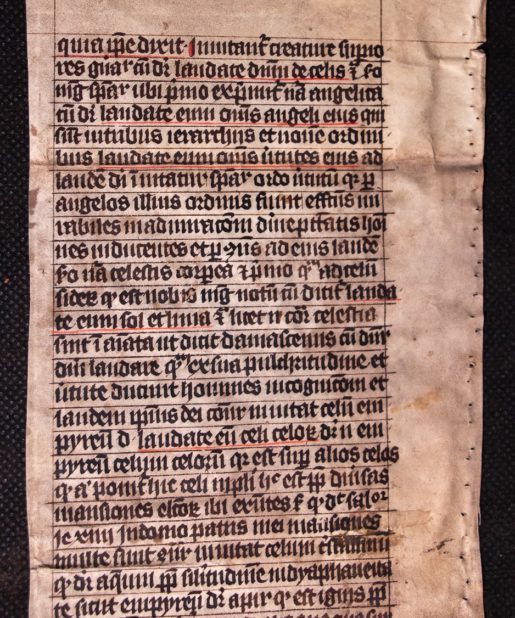
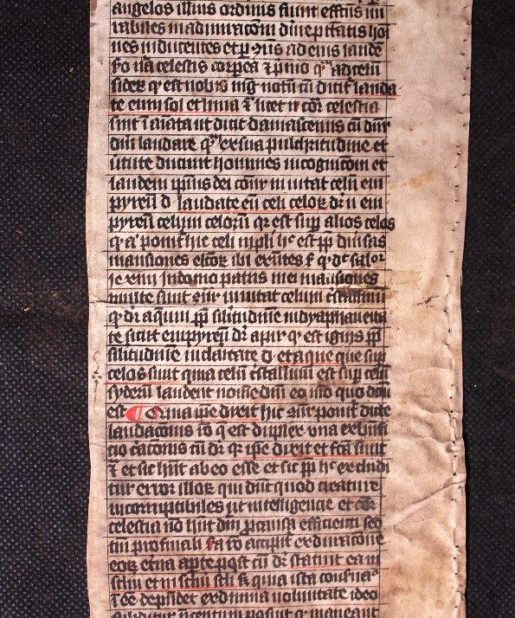
![The Annunciation to Zechariah, on a bifolium from an Antiphonary, in Latin [Germany or Austria, (mid-?)15th century] The Annunciation to Zechariah, on a bifolium from an Antiphonary, in Latin [Germany or Austria, (mid-?)15th century]](https://butlerrarebooks.co.uk/wp-content/uploads/2021/04/IMG_0977-515x618.jpg)
![The Annunciation to Zechariah, on a bifolium from an Antiphonary, in Latin [Germany or Austria, (mid-?)15th century] The Annunciation to Zechariah, on a bifolium from an Antiphonary, in Latin [Germany or Austria, (mid-?)15th century]](https://butlerrarebooks.co.uk/wp-content/uploads/2021/04/IMG_0769-515x618.jpg)
![Saints Peter and Paul, in an illuminated historiated initial ‘N’, cut from a Gradual in Latin on parchment [Italy (Florence); 15th century (c.1470s)] Saints Peter and Paul, in an illuminated historiated initial ‘N’, cut from a Gradual in Latin on parchment [Italy (Florence); 15th century (c.1470s)]](https://butlerrarebooks.co.uk/wp-content/uploads/2022/02/IMG_6782-515x618.jpg)
![Saints Peter and Paul, in an illuminated historiated initial ‘N’, cut from a Gradual in Latin on parchment [Italy (Florence); 15th century (c.1470s)] Saints Peter and Paul, in an illuminated historiated initial ‘N’, cut from a Gradual in Latin on parchment [Italy (Florence); 15th century (c.1470s)]](https://butlerrarebooks.co.uk/wp-content/uploads/2022/02/IMG_6781-515x618.jpg)
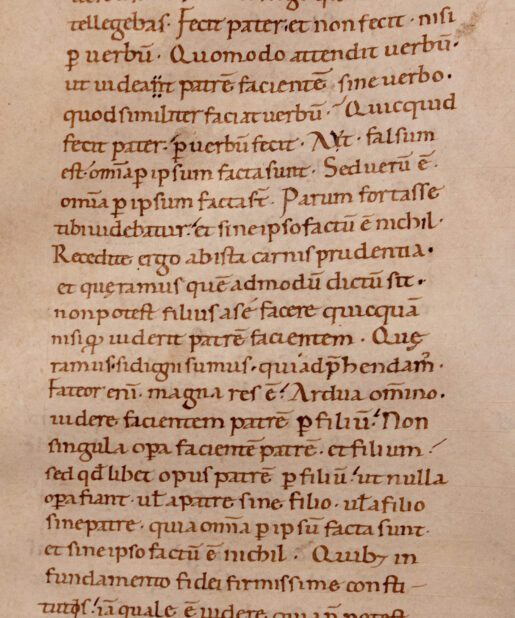
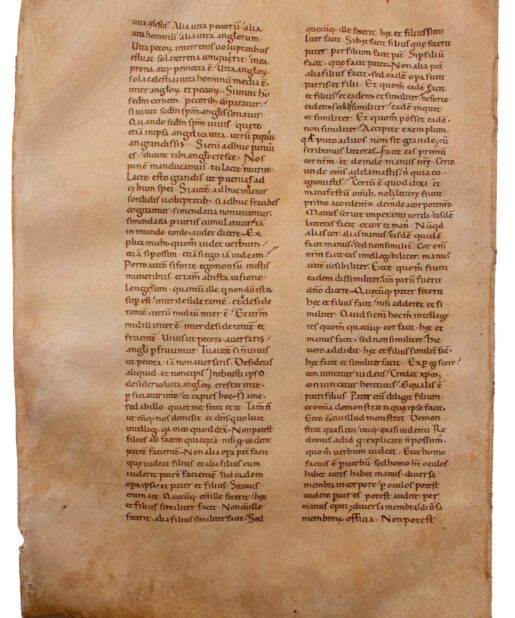
![The Model for 15th-Century Humanistic Script and Decoration – A large bifolium from a decorated Lectionary, in Latin [Italy, 12th century, first half] The Model for 15th-Century Humanistic Script and Decoration – A large bifolium from a decorated Lectionary, in Latin [Italy, 12th century, first half]](https://butlerrarebooks.co.uk/wp-content/uploads/2021/04/IMG_0688-515x618.jpg)
![The Model for 15th-Century Humanistic Script and Decoration – A large bifolium from a decorated Lectionary, in Latin [Italy, 12th century, first half] The Model for 15th-Century Humanistic Script and Decoration – A large bifolium from a decorated Lectionary, in Latin [Italy, 12th century, first half]](https://butlerrarebooks.co.uk/wp-content/uploads/2021/04/IMG_0686-515x618.jpg)
Reviews
There are no reviews yet.